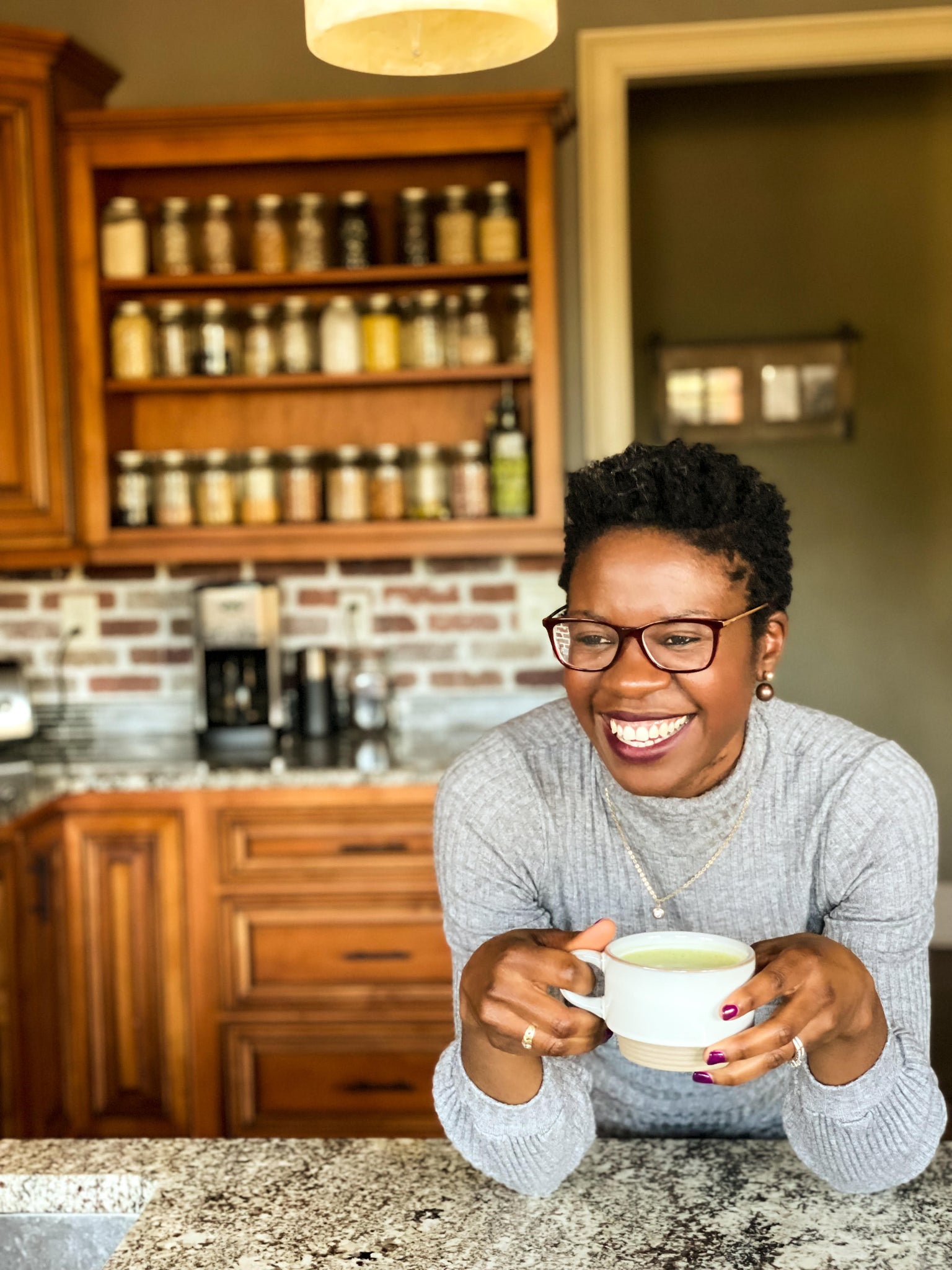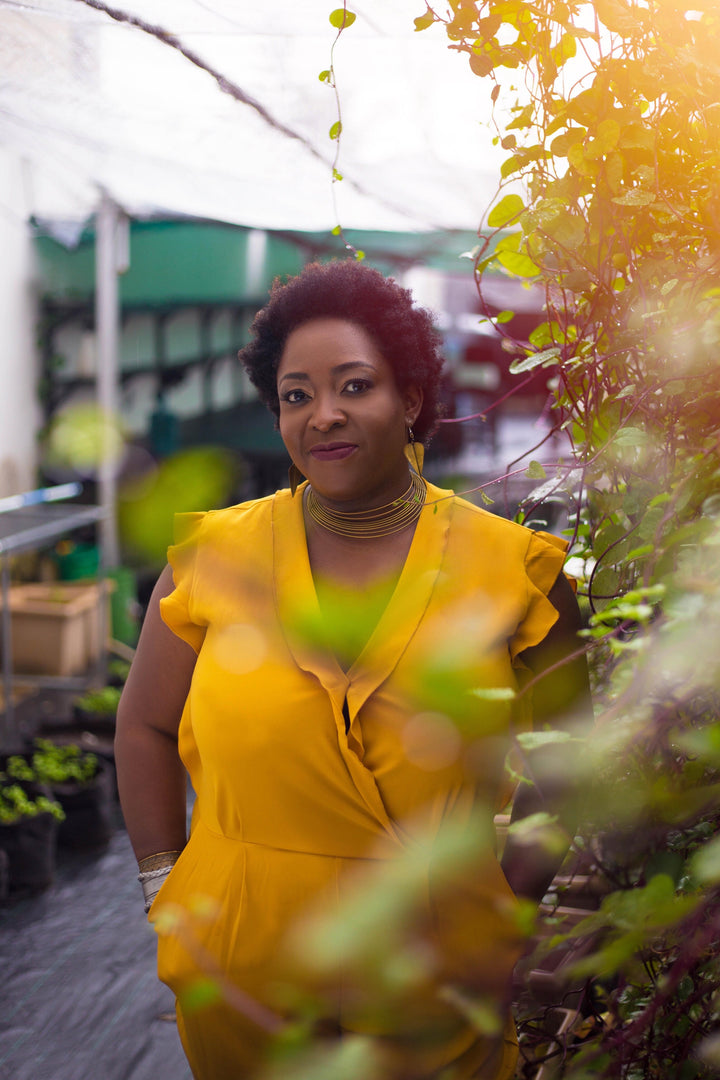Let's Talk Flavors from Miniature Africa (Cameroon) with Elsie!

Written by: Bethany
In 2006, Elsie Forsung moved to the United States from Cameroon for college. At that time, there was hardly any access to foods that reminded her of home and that's how AfrovitalityEats was created. She started the blog to share recipes that could be made with the ingredients available to her in the U.S as she drew inspiration from traditional dishes back home. In addition to providing us with recipes, she now offers food photography and recipe development services.
In Cameroon, there’s a system called “Jangi”. Simply put, Jangi is a rotating savings fund where a community of people participating contribute money towards the needs of a specific family or person up next on the roster. Party wise, dinner is held every Sunday after church from home to home and the host for that week uses the money that has been collected from the Jangi towards food and drinks.
With a system like this, communal eating is nothing new to Elsie. In more recent years, there's been a bit of a shift and a lot more access to our local foods and spices which she’s extremely thankful for and is glad to have found her community of friends here in the U.S where this system is still replicated every two weeks. The motto has always been “Come one, Come all.”
Entering this conversation, my only experience with the cuisine has been a deeply flavorful grilled tilapia and fried plantains served with the hottest pepper sauce from a local restaurant in Houston so I was extremely excited to learn more about the different dishes Cameroon has to offer. I knew I’d leave with a lot more options to try from that restaurant before I can finally make my way to the country.
Elsie Forsung: Here's my thing, where Cameroon is located, there's a reason why we call it “Africa in Miniature" because we have all the climates. That really helps us be who we are in that region. Cameroon is divided into the French and the English speaking part. Where I’m from, we're closer to Nigeria so it's very common for you to see things like Eru which is what I think they call Afang in Nigeria. We also eat Jollof, plantains and all of that but when you go towards the French speaking part, It’s very normal to see French pastries and breads in the market. We're so diverse in our food. When I grew up, it was very normal for me to have French bread and eggs in the morning, and make sandwiches like Pain Charge’au. I could also eat puff-puff later on.
My mom farmed vegetables, tubers and all that when I grew up so we didn’t eat meat a lot. It was for special occasions like Christmas and holidays. Now, we incorporate that in most of our meals and things have changed but vegetables, greens and fufu is what we grew up eating. Fufu corn, that was it. There are names that are general throughout the country like Poisson Braisé even though I could just say grilled fish. These dishes are not unique to only one part but then there are some Cameroonian dishes that are only in certain places that I’ve never even tried before.
Bethany Oyefeso: I hadn't thought of it being separated in that way. I always just categorized all of Cameroon as one of the francophone countries.
Elsie Forsung: If you look at Cameroon, some people would say it’s West Africa but if you really look at it, it’s central. The people in the South-west region are more likely to say it’s West Africa because our culture is so tied to that part of the continent but it’s really central west Africa.
Bethany Oyefeso: I love this geography lesson. I was just talking about the south-south of Nigeria and how there’s a village in Akwa Ibom that shares a border with Cameroon and they share a similar dish called Ekpang Nkukwo.
Elsie Forsung: Oh yeah. I absolutely love it. Isn’t that crazy? I love our diversity and how unique but similar we are.
Bethany Oyefeso: Absolutely! I feel like my favorite part about food as I'm growing and maturing is that I’m learning so much history. I was a full on theater arts kid so now I’m learning all my history through food, the way it has traveled, been passed on and geography in terms of how things like climate even affect the foods that are grown, the livestock that can survive, all that stuff.
Elsie shared that a big joy of hers comes from the curiosity of guests about the dishes. Once in a while, she’ll offer cooking classes and tastings and the most exciting part is getting to talk about her cuisine in depth, the traditional processes, her fond memories and why she makes the choices she makes with the ingredients she has now.
We talked about some common ingredients found in the cuisine and it incorporates a lot of fresh herbs like basil, parsley, tarragon. The equivalent of jollof rice in Cameroon would be Riz sauté à la tomate and a dish like that would include lots of fresh herbs. There are more traditional spices like Njangsa seeds which have flavor but also act as a thickener. It’s predominantly used in Njangsa sauce. They use peanuts a lot too, roasted peanuts for a groundnut soup and then for one of their most famous dishes, Ndole that’ll include raw peanuts that are boiled then blended. Egusi seeds are also used to thicken soups. Country onions are extremely aromatic and when ground to a fine powder used to season soups and sauces. I learned it has a flavor profile very similar to garlic.
I asked her to share a dish she’d cook for a guest visiting her for the first time that wants to enjoy some Cameroonian food.
Elsie Forsung: It's not like I'm gonna cook one dish when someone is coming to my house. I’d do a whole spread but if I had to pick one since you’re making me pick, I’d do something that incorporates the whole fish. I'll probably get like a snapper and grill it.
Poisson Braisé again. This got me curious about the types of fish used and she said it’s typically mackerel but could really be any fish. This led to a conversation about a beach town called Limbe where they have a spot next to the sea. You pick your fish and they grill it right away. It’s served with hot pepper and “Miondo ou(or) Bobolo”. Miondo and Bobolo are made from the same thing - cassava that is softened and fermented by soaking for days, fibers removed and mashed to a dough but the finishing determines the end product. Bobolo is a little thicker and firmer while miondo is a bit on the flatter side. They’re both tied and steamed in banana leaves and have a very chewy texture.
We ended our delicious conversation on an even more delicious note learning about her favorite comfort dish; Koki Beans.
Elsie Forsung: “This is my ultimate favorite and it's because it's so close to my mom. My mom taught me. Koki beans is black eyed peas with some palm oil, Maggie, salt, pepper and cocoyam leaves. My middle name is Nama and in my tribe it means “Woman of the kitchen”. That was my grandma’s name so as a child when I went to the village and people would come to visit me, they would always bring Koki beans. It’s served with boiled plantains, cocoyam, or sweet potatoes. Koki is time consuming so if someone makes you Koki, they care about you. My mom showed me how to make it when she came visiting but my Koki is never like my mom’s . Hers is way better and that’s home for me.”
FOLLOW ELSIE’S WORK
You can follow and check out Elsie's work here and Instagram.



